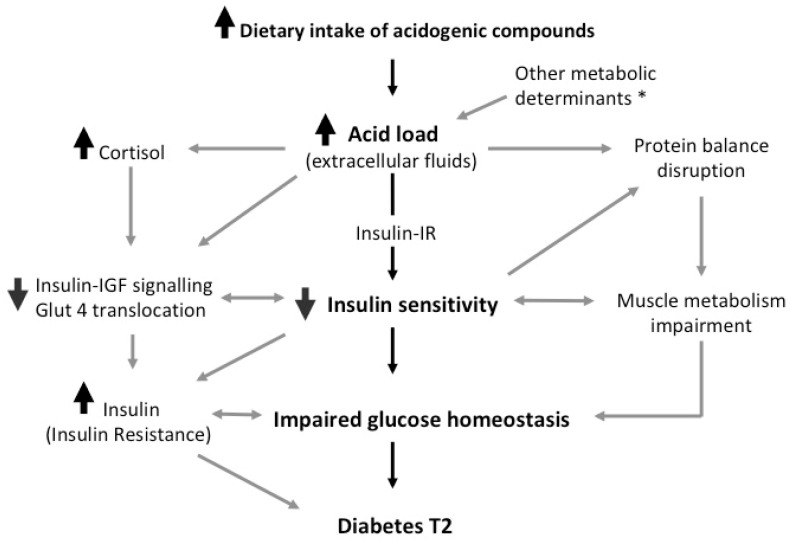Figure 1.
Synopsis of the possible underlying mechanism. Cortisol and other secondary mediators interfere with peripheral insulin activity via both impairing insulin receptor signal transduction and lowering the activation of intracellular insulin cascade [23,24]. The de-phosphorylation of the insulin receptor and key regulators, such as Akt [20,21], suppresses the translocation of GLUT4 in target tissues and downregulate the anabolic reactions propelled by insulin, including the inhibition of muscle protein breakdown [54,58,59]. This mechanism is likely to be independently promoted by pH imbalance secondary to acid load increase, and may account for the preservation of muscle mass when the acid load is low [63,64]. * Factors inducing the increase of acid load: catabolism end-products, metabolic conditions, kidney failure.

